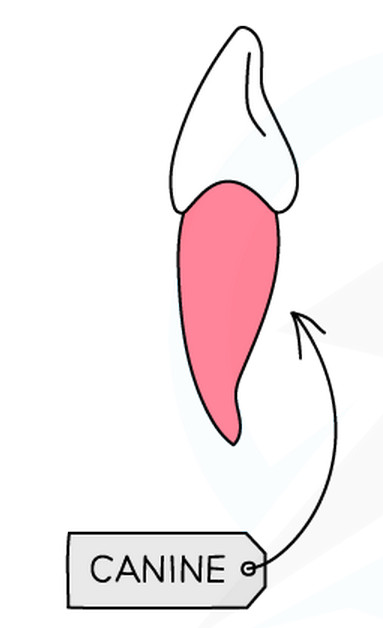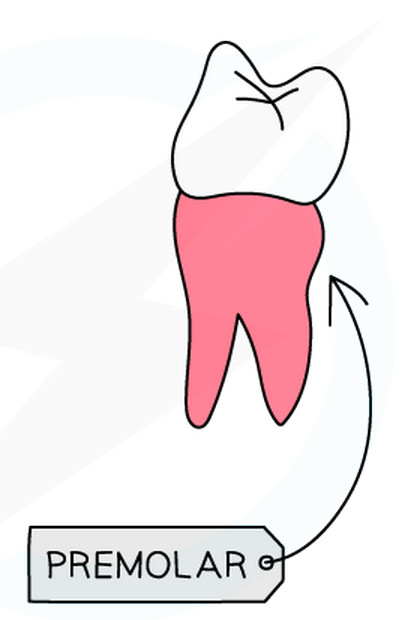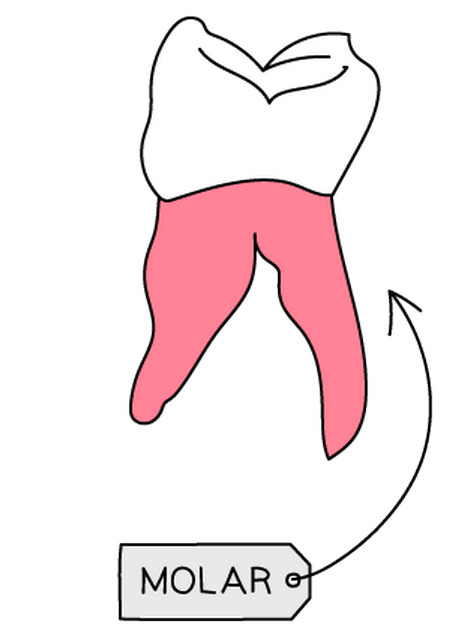Table of Contents
What are teeth? Teeth are hard structures in our mouth that help us break down food. Humans have different types of teeth, each designed for specific jobs in the process of eating. Understanding the types of teeth and what they do is important for learning about digestion and how our body processes food.
Key Facts About Human Teeth: #
- Humans have 32 permanent teeth in total (adults)
- Children have 20 milk teeth (primary teeth)
- There are 4 different types of teeth
- Each type has a specific function in food processing
- Teeth are made of the hardest substance in the human body (enamel)
The Four Types of Teeth #
Each type of tooth has a different shape and function. The shape of each tooth is perfectly designed for its specific job in breaking down food.
1. Incisors #

Shape and Location: #
- Shape: Flat and sharp-edged, like a chisel
- Location: Front of the mouth (4 in upper jaw, 4 in lower jaw)
- Total number: 8 incisors
Function: #
- Cutting food: Like scissors, they cut food into smaller pieces
- Biting: First contact with food when taking a bite
- Examples: Biting into an apple, cutting bread, tearing lettuce
Special Features: #
- Thin, flat crown (top part)
- Sharp cutting edge
- Single root anchor
2. Canines #

Shape and Location: #
- Shape: Pointed and sharp, like a cone
- Location: Next to incisors (2 in upper jaw, 2 in lower jaw)
- Total number: 4 canines
- Also called: “Eye teeth” or “Cuspids”
Function: #
- Tearing food: Rip and tear tough food like meat
- Gripping: Hold food while other teeth work
- Examples: Tearing meat, ripping tough vegetables, holding food in place
Special Features: #
- Longest teeth in the mouth
- Sharp, pointed tip
- Strongest single root
- Most developed in meat-eating animals
3. Premolars #

Shape and Location: #
- Shape: Broader with two pointed tips (bicuspids)
- Location: Behind canines (4 in upper jaw, 4 in lower jaw)
- Total number: 8 premolars
- Also called: “Bicuspids”
Function: #
- Crushing food: Break down food into smaller pieces
- Grinding: Start the grinding process
- Bridge function: Help transfer food from front to back teeth
- Examples: Crushing nuts, breaking cookies, grinding vegetables
Special Features: #
- Two pointed cusps (tips)
- Broader chewing surface than canines
- Usually have 1-2 roots
- Transition teeth between cutting and grinding
4. Molars #

Shape and Location: #
- Shape: Large and flat with multiple cusps
- Location: Back of the mouth (6 in upper jaw, 6 in lower jaw)
- Total number: 12 molars (including wisdom teeth)
- Types: First molars, second molars, wisdom teeth (third molars)
Function: #
- Grinding food: Main grinding and chewing teeth
- Crushing: Break down tough food completely
- Final processing: Prepare food for swallowing
- Examples: Grinding grains, crushing hard foods, chewing meat thoroughly
Special Features: #
- Largest teeth in the mouth
- Flat, broad chewing surface
- Multiple cusps (4-5 points)
- Multiple strong roots (2-3 roots)
- Most powerful chewing force
Summary – Types of Teeth and Functions #
- Incisors (8 total): Sharp, flat teeth at the front for cutting and biting food
- Canines (4 total): Pointed teeth for tearing and gripping tough food
- Premolars (8 total): Broader teeth with two cusps for crushing food
- Molars (12 total): Large, flat teeth at the back for grinding and final food processing
- Total: 32 permanent teeth working together to break down food for digestion
- Each tooth type has a shape perfectly adapted to its specific function
- The chewing process follows a sequence from cutting to grinding




